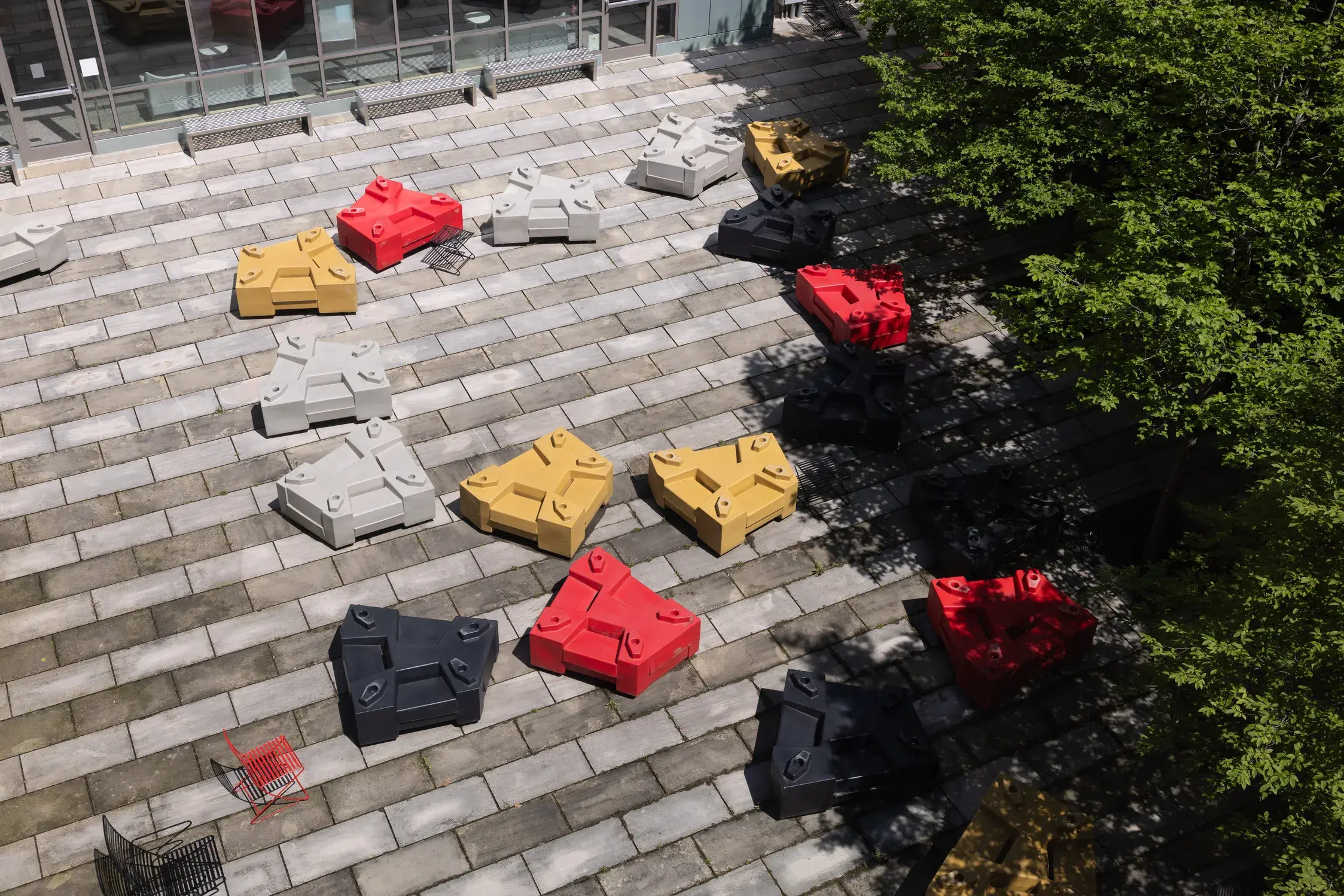
About the Art
Petit Five is one of Jim Isermann’s many public art commissions which experiment with the intersection of industrial design and fine art sensibilities. At first glance, it may not be obvious that this unusual seating in Hagerty Hall's courtyard is one of the public artworks on campus. A second look reveals that each large furniture module, whether in red, gold, black or beige, formally echoes the five-sided atrium in which it sits. This modular seating is designed to be a functional, site-specific artwork. The individual pieces can interlock and be rearranged into innumerable clusters to facilitate both solo and group activity. They are made from durable and fade-resistant materials — of the kind often used for playground equipment — using methods drawn from industrial design and production. From the upper floors of Hagerty Hall, the seating elements appear as an almost two-dimensional composition, the colors standing out against the gray flagstone courtyard. By rearranging the pieces, innumerable images and patterns can be formed. The intended result is a flexible social space and a work of art that can change with each reconfiguration.
Collection of The Ohio State University. Funded through the Ohio Percent for Art program.
Material
Polyethylene
Location
Outside of Hagerty Hall


About the Artist
An American artist from Kenosha, Wisconsin, Jim Isermann’s long career has often challenged the boundaries of art, craft and applied design. He received his MFA in 1980 from the California Institute of the Arts, where he developed an interest in post-World War II design and aesthetics, taking inspiration from the German Bauhaus and textile artists such as Anni Albers. In his early career, Isermann frequently incorporated his own replications of mid-20th-century furniture and craft objects into his works and exhibitions. Since the early 2000s, he has more often turned to the visual language and tools of industrial design, as is the case with Petit Five. Isermann considers his gay identity to be essential to interpreting his work, particularly the elements of campiness within it. Isermann’s celebration of the marginal and the decorative stands in intriguing contrast to his self-ascribed interest in geometric algorithms and structural logic.


